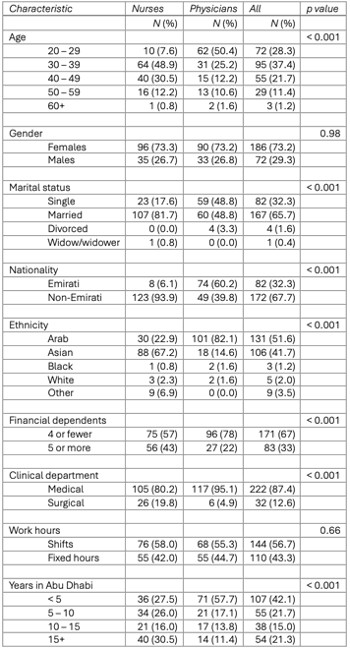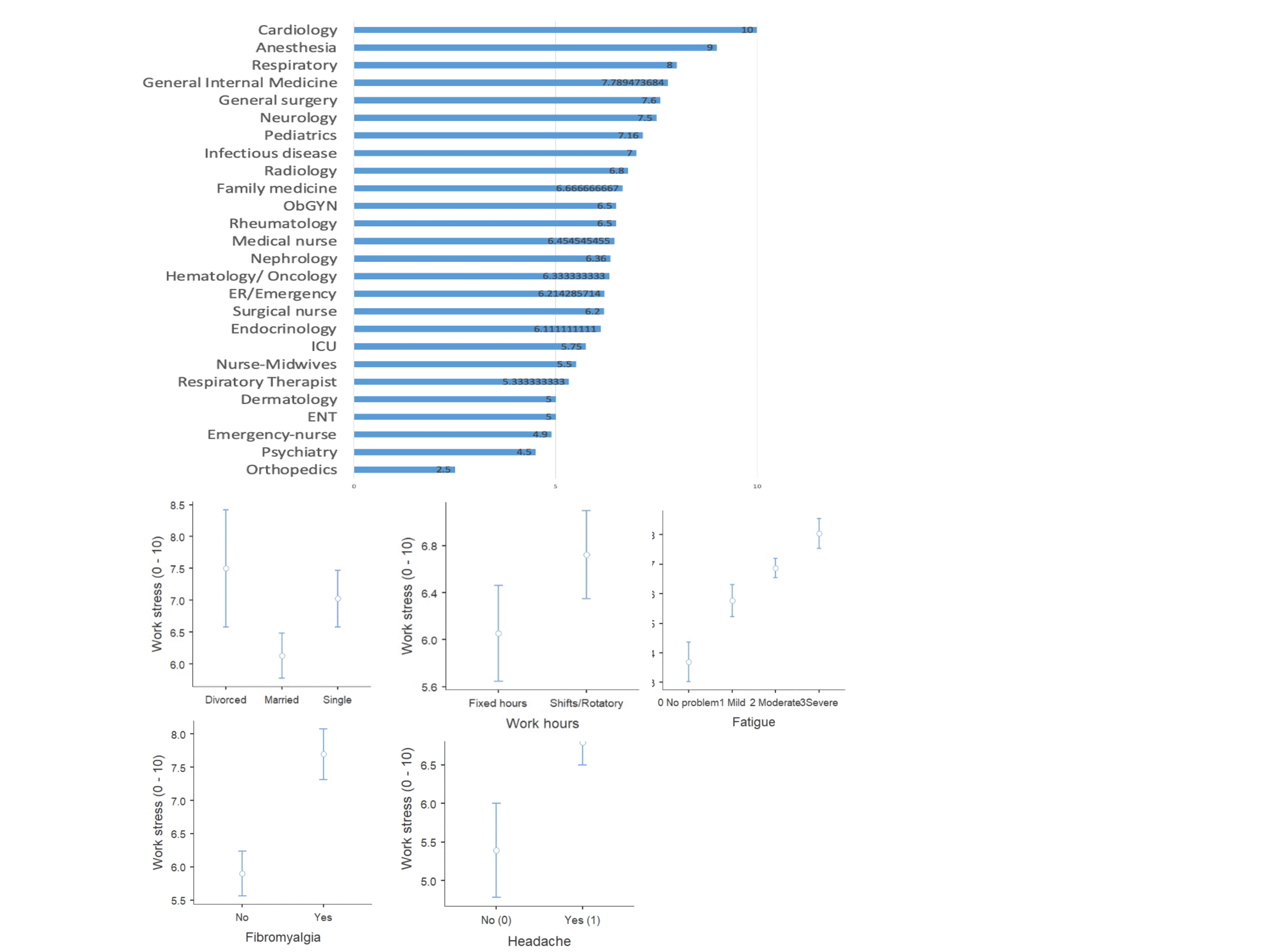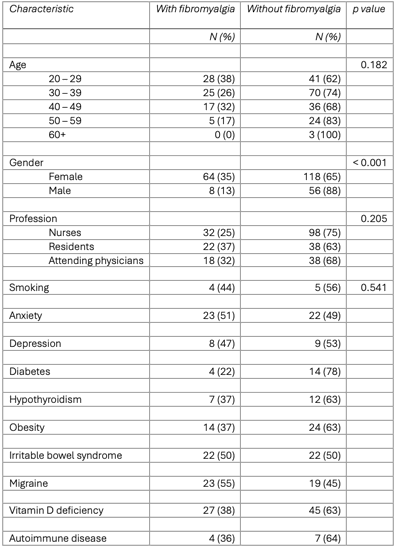Session Information
Session Type: Poster Session B
Session Time: 10:30AM-12:30PM
Background/Purpose: The stress level of healthcare workers may impact the quality of care provided to patients. The prevalence of occupational stress among healthcare workers can range from 27% to 87.4%. Consequently, they are prone to develop chronic conditions like fatigue and fibromyalgia. We aimed to assess stress levels and identify healthcare workers at risk for occupational burnout and fibromyalgia.
Methods: A cross-sectional study was conducted among healthcare professionals in the Abu Dhabi region. Participants voluntarily agreed to participate and completed an anonymous survey between November 2023 and February 2024.The self-administered questionnaire assessed various aspects including sociodemographic characteristics, the Workplace Stress Scale to assess workplace-related stress and the impact of stress on quality of life, focusing on fibromyalgia.
Results: Among the 254 respondents, a majority were females (186; 73.2%); mostly in the age group 20 to 59 years (251; 98.8%). The overall response rate based on the total workforce was 4.5%. Half of the respondents were physicians (48.4%) while the other half were nurses (51.6%). One-third (32.3%) were Emirati and the ethnicities were mostly Arab (131; 51.6%), and Asian (106; 41.7%). About half of the respondents (107; 42%) were relatively new having joined less than five years ago. Table1 A wide range of clinical departments were represented including medical, surgical, and nursing. Half were on shift rotations (144; 56.7%) while the rest were on fixed schedules. Self-reported stress (on a scale of 0 to 10) was higher after joining the current institution compared to baseline stress before joining (mean 6.43 vs. 4.20; p < 0.001). Women reported substantially higher stress (6.70 vs 5.69; p = 0.002). Nurses had lower self-reported stress than consultant physicians (5.77 vs 7.21; p < 0.001). Emirati nationals reported higher stress than non-Emirati respondents (7.11 vs 6.11; p < 0.001). Main source of stress was the workplace for 232 (91.3%) respondents, while others reported home and financial issues. More than half 137 (53.9%) had thought of quitting their job because of work-related stress. Only 33 (13.0%) had attended a stress relaxation workshop or similar support services. There was a moderately strong correlation between workplace stress and fatigue (r = 0.57; p < 0.001). Figure1 On multivariate analysis, the predictors for occupational stress included the following: female gender, fatigue, and certain clinical departments such as anesthesia, cardiology, internal medicine, nephrology, and pediatrics (adjusted R-squared = 0.390). Based on self-reported symptoms, 72 (29.3%) respondents met the criteria for fibromyalgia (95% confidence interval: 24 to 35%); most of these were females 64 out 72 (88.9%).The prevalence was lowest among nurses (25%; 32 out of 130), followed by attending physicians (32%; 18 out of 56), and highest among resident physicians (37%; 22 out of 60). Table2
Conclusion: Fairly high stress was reported by healthcare professionals especially women. Workplace changes and stress reduction support programs are needed urgently to protect this vital workforce.
To cite this abstract in AMA style:
Al Nokhatha S, Alneyadi A, Alnuaimi N, Almansoori H, Alhosani S, Almemari S, Hashim M. Occupational Stress and Fibromyalgia Among Healthcare Professionals in Abu Dhabi Region, United Arab Emirates: A Cross-sectional Study [abstract]. Arthritis Rheumatol. 2024; 76 (suppl 9). https://acrabstracts.org/abstract/occupational-stress-and-fibromyalgia-among-healthcare-professionals-in-abu-dhabi-region-united-arab-emirates-a-cross-sectional-study/. Accessed .« Back to ACR Convergence 2024
ACR Meeting Abstracts - https://acrabstracts.org/abstract/occupational-stress-and-fibromyalgia-among-healthcare-professionals-in-abu-dhabi-region-united-arab-emirates-a-cross-sectional-study/



